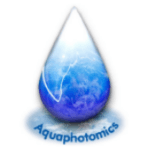
As a technique mostly suited for water systems analysis, one of the most natural applications of aquaphotomics is water quality control. Since measurements of very small concentrations of solutes was proved to be achievable, efforts were put into detection of contaminants such as pesticides (Alachlor and Atrazine, concentration from 1.25 – 100 ppm, detection limit estimated to be 12.6 ppm for Alachlor and 46.4 ppm for Atrazine) (Gowen et al. 2011) and also filtration monitoring (Cattaneo et al. 2011). Moving on from the detection and quantification of individual solutes, aquaphotomics introduced a concept of water spectral pattern as a holistic marker (or biomarker) (Kovacs et al. 2016). The applicability of the proposed concept was evaluated by monitoring the water structural changes in different aqueous solutions such as acid, sugar, and salt solutions at millimolar concentration level, as well as in real life ground water system (Kovacs et al. 2016). The success of this approach opened a new venue in water quality monitoring by offering a quick and cost effective method for continuous screening of water, where even a small disturbances will be reflected in the water absorbance spectral pattern and may serve as an indicator for the necessity of detailed conventional solute analysis.
Cattaneo, T.M.P., V. Stefania, N. Elena, and E. Vittorio. 2011. “Influence of filtration processes on aqueous nanostructures by NIR spectroscopy.” Journal of Chemistry and Chemical Engineering 5 (11):1046-1052.
Gowen, A., Y. Tsuchisaka, C. O’Donnell, and R. Tsenkova. 2011. “Investigation of the Potential of Near Infrared Spectroscopy for the Detection and Quantification of Pesticides in Aqueous Solution.” American Journal of Analytical Chemistry 2 (08):53.
Kovacs, Z., G. Bázár, M. Oshima, S. Shigeoka, M. Tanaka, A. Furukawa, A. Nagai, M. Osawa, Y. Itakura, and R. Tsenkova. 2016. “Water spectral pattern as holistic marker for water quality monitoring.” Talanta 147:598-608.
